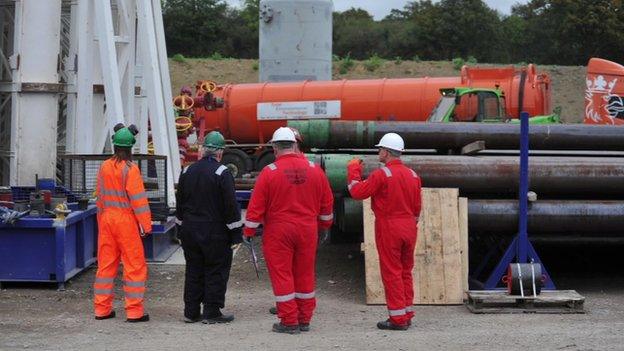Gatwick oil 'could add billions' to UK economy
- Published
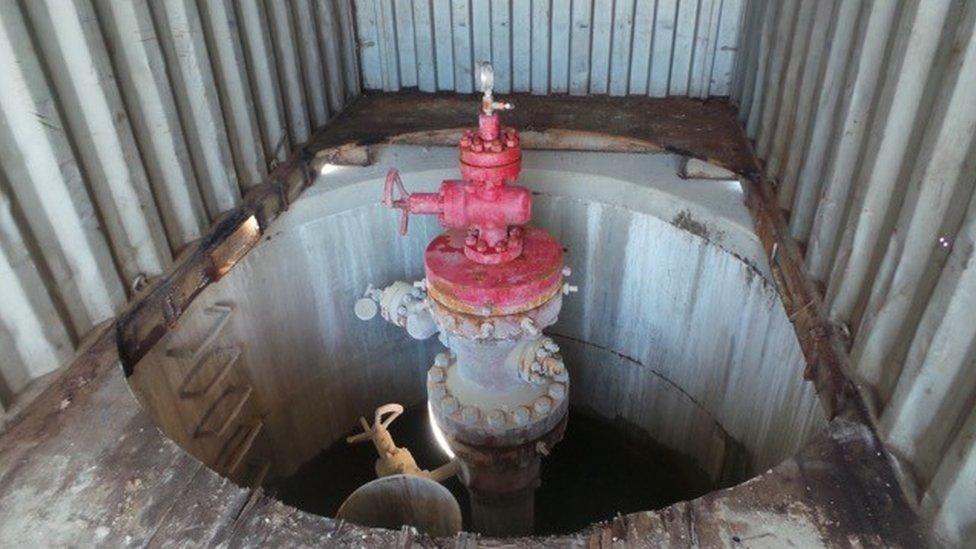
UKOG said oil in the Weald basin could make a "very significant" contribution to the UK's economy
Oil production in the South of England could add billions to the economy and help offset the decline in North Sea production, a report says, external.
It has been commissioned by UK Oil & Gas (UKOG), the firm behind the plan to extract oil from the Gatwick area.
The report, by consultants EY, said production could generate between £7bn and £52bn over a 40-year period.
But it contains controversial assumptions about the amount of wells and sites needed to recover the oil.
At the low end, the EY report envisages 300 wells being drilled at 25 locations.
That's significantly more than the 250 or so wells which have been drilled in the region over the years.
But the high scenario with the biggest economic impact, assumes 2,400 wells are drilled at up to 100 locations.
That's likely to be viewed as unrealistic by both environmentalists and many in the petroleum industry.
The majority of the jobs and much of the economic impact would also be outside the region.
The study attempts to estimate the economic impact of further production under a range of scenarios.
UKOG is involved in oil exploration at Horse Hill in Surrey, three miles from Gatwick Airport.
Its focus is a geological formation called the Kimmeridge Clay which is present across much of the Weald, a region that spans Kent, Sussex, Surrey and Hampshire.
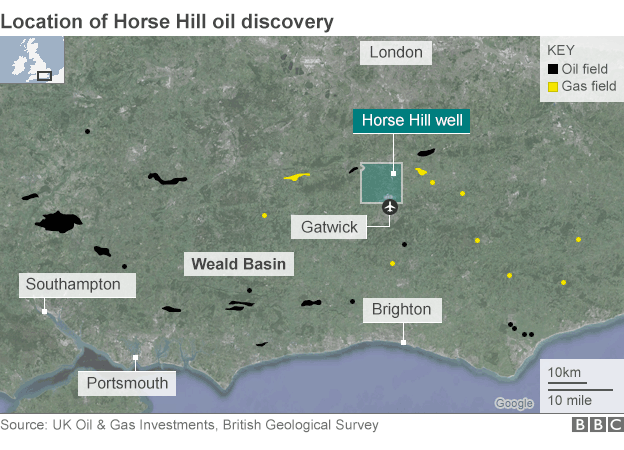
In April last year, UKOG's chief executive Steve Sanderson told the BBC that there could be up to 100bn barrels of oil in the Weald.
"This report confirms UKOG's view that the development of Kimmeridge Limestone oil in the Weald basin can make a very significant contribution to the economy, employment and energy security of the UK," Mr Sanderson said.
Oil has been produced in the region for decades.
The findings
The report concludes that the economy could be boosted by between £7.1bn to £52.6bn over a 40-year period.
Total oil production over that period could range from 140 million to 1.125 billion barrels.
Production would peak within 12-14 years. At that time the region could provide from 4% to 27% of the UK's oil demand, as measured in 2014.

In February and March UKOG carried out flow tests at its well at Horse Hill.
Payouts to communities near production sites could total from £77m to £557m.
"The development of Kimmeridge Limestone Oil in the Weald Basin, assuming it can be extracted from a development site at the volumes projected by UKOG, has the potential to generate significant economic value to the UK economy, partially off-set the decline in oil production from UK fields, support employment, and generate significant tax benefits to the exchequer," the report states.
Jobs
The EY analysis also suggests that between 994 and 5,607 jobs could be generated on average per year due to the activity.
In practice job numbers would be high initially, during the construction of the sites, but would tail off significantly afterwards.
But EY estimates that less than a third of the jobs generated would be in the South, given much of the supply chain for the oil industry is in the North of England and Scotland.
For the same reason about 40% of the total economic benefit would be felt elsewhere in the UK.
Oil in the Weald
Last October, UKOG said that there could be 124 billion barrels of oil in the Weald basin.
This was based upon a report commissioned by Nutech, a firm that specialises in evaluating oil fields.
Nutech also estimated that there could be 19.5 billion barrels of oil in place in two limestone layers in the Kimmeridge Clay.
These are estimates of oil in the ground, not proven recoverable reserves.

There's likely to be considerable opposition in the region to expanding oil production.
UKOG has always insisted that these limestone rocks are naturally fractured and that it won't need to use fracking to produce oil.
In February and March the firm carried out flow tests at its well at Horse Hill.
It reported that oil had flowed naturally, without pumping, at a rate of 1,365 barrels per day from the two limestone layers over a period of several hours.
This EY analysis, carried out prior to the flow tests, assumes rates of 400 barrels per day from a well.
UKOG says it plans to seek permission to carry out extended production tests at the site.
But there's likely to be considerable opposition in the region to expanding oil production.
Friends of the Earth south east campaigner Rachel Kennerley said:
"Drilling huge numbers of wells across the south east could pose a significant risk to communities, and their environment - and face huge local opposition.
"If we're to avoid the worst impacts of climate change we must leave fossil fuels in the ground, and develop a modern, renewable and efficient energy system instead."
And with a languishing oil price, the prospects for an industry of the size envisaged in this report look highly unlikely.
- Published16 February 2016
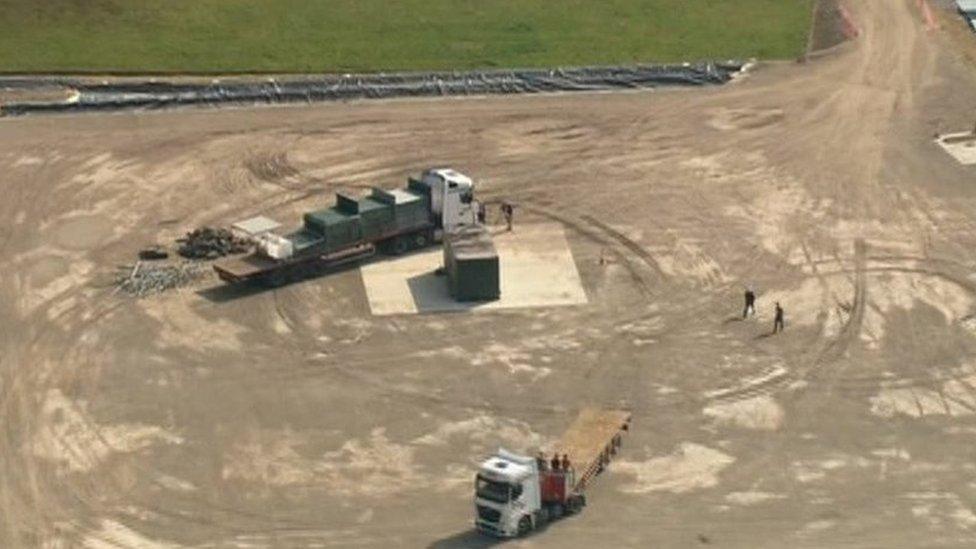
- Published19 February 2016

- Published20 February 2016

- Published15 April 2015
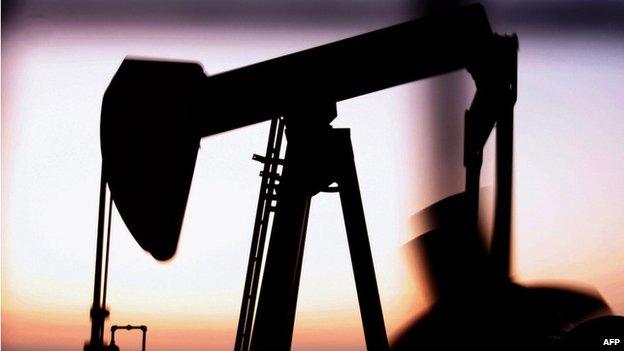
- Published9 April 2015
